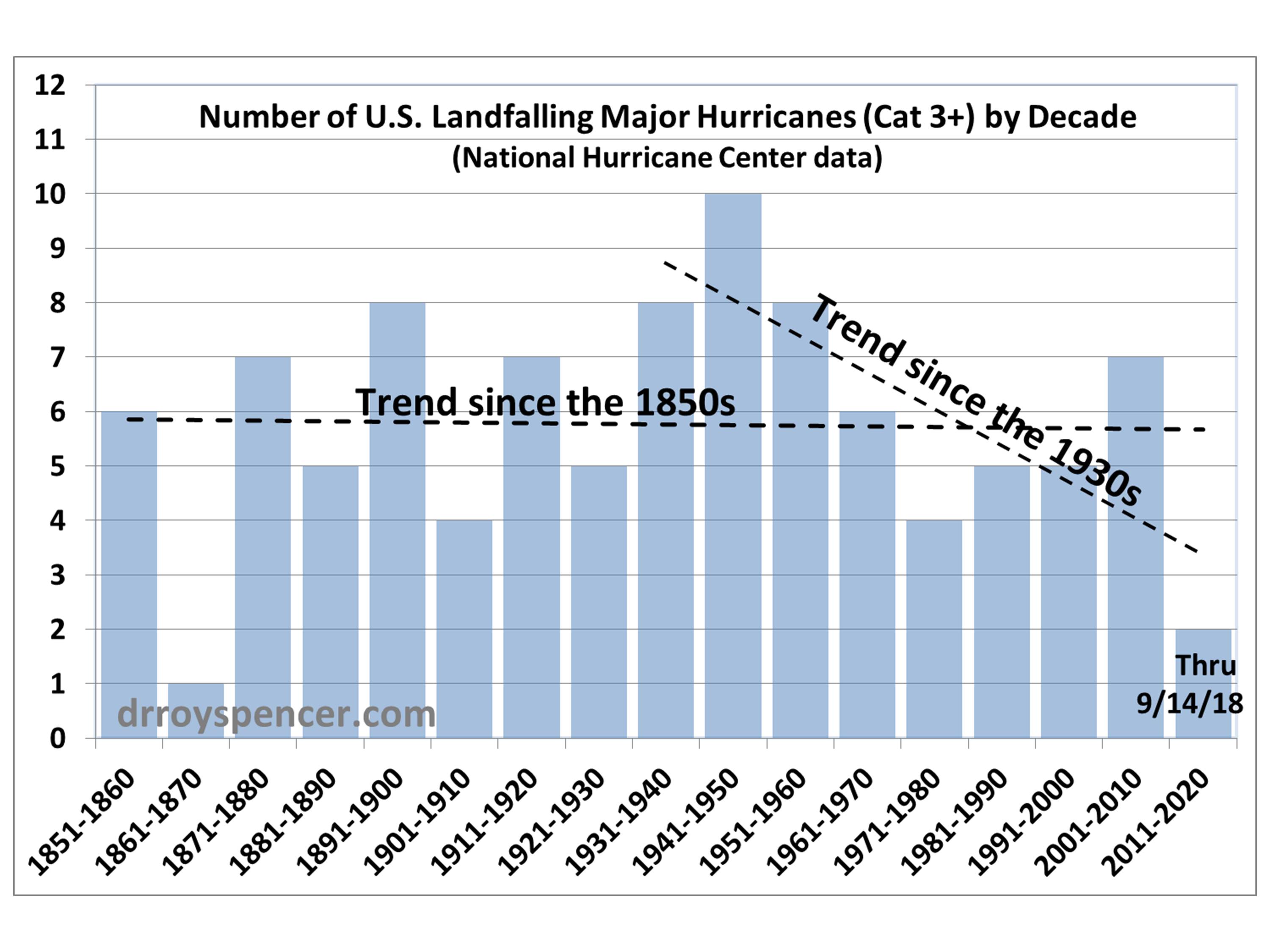As you well know before the 12 year hiatus of powerful hurricanes making landfall in the United States that Curry was right, after that hiatus Spencer is right.
I don’t agree with your interpretation of Curry’s positions and Spencer’s position.
Curry is stating the number of major hurricanes almost doubled from the 1970’s to the 00’s.
Looking at this table of storms I found:
http://www.stormfax.com/huryear.htm
- From 1968-1977 they averaged 1.7 major hurricanes per year
- From 1998-2007 they averaged 3.7 major storms - more than double.
- From 2008-2017 they averaged 3.2 major storms almost double
It appears that Curry’s paper from 05 is still basically correct.
What Spencer is saying can’t be directly compared to what Curry said. I was expecting that you knew that.
Spencer is saying that the number of major storms
that hit the US has decreased since the 30’s. Something I completely agree happend per the definition of ‘major storm’.
While Curry said the number of major storms has increased since the 70’s. She’s says nothing about hitting the US
These statements aren’t opposed.
The number of major storms can increase while the number that hits the US decreases.
The problem with Spencer’s article isn’t the data he presents so much as the conclusions he leads you to aren’t supported.
He leads you to believe that major storms are less frequent, (which you did), but if we look at all major storms and not just the ones that hit the US:
- From 1938-1947 they averaged 1.7
- From 1948-1957 they averaged 3.9
- From 1998-2007 they averaged 3.7
- From 2008-2017 they averaged 3.2
- From 1938-2017 the average was 2.6
The last 20 years has been 33% above the 70 year average. Even if we cherry pick the 3.9 value vs the 3.2 that’s only a 21% drop not 50%.
If we step back and look at the frequency of named storms (Tropical Storms and up) we’ve been averaging 15 named storms per year over the last twenty years. Compare that against the 70 year average of around 11 named storms.
At no point does Spencer suggest why the increasing number of major and hurricanes doesn’t hit the US. Mostly it looks like he’s hoping you won’t realize the number of storms across the board are increasing across the board as climate scientists like Curry have suggested will happen due to climate change. He’s doing that by cherry picking which statistic he provides. His choice of major hurricanes at US impact allows him to ignore Cat 4 hurricanes like Ike that hit as historically massive Cat 2.
He then goes on to state that the reason for the costlier storm damage is that more construction in vulnerable areas is the cause. That’s also correct. Increased coastal building is a cause of the increased storm cost. But then he says it’s not due to global warming and supports this conjecture by linking to his “Denier for Dummies” style book on Amazon. This is utter bull as there’s nothing that says the increased cost can’t be caused by both.
In fact there are several studies that directly show increased rainfall and wind speeds for individual storms due to climate change:
https://arstechnica.com/science/201...-the-gulf-of-mexico/?comments=1&post=35310645


